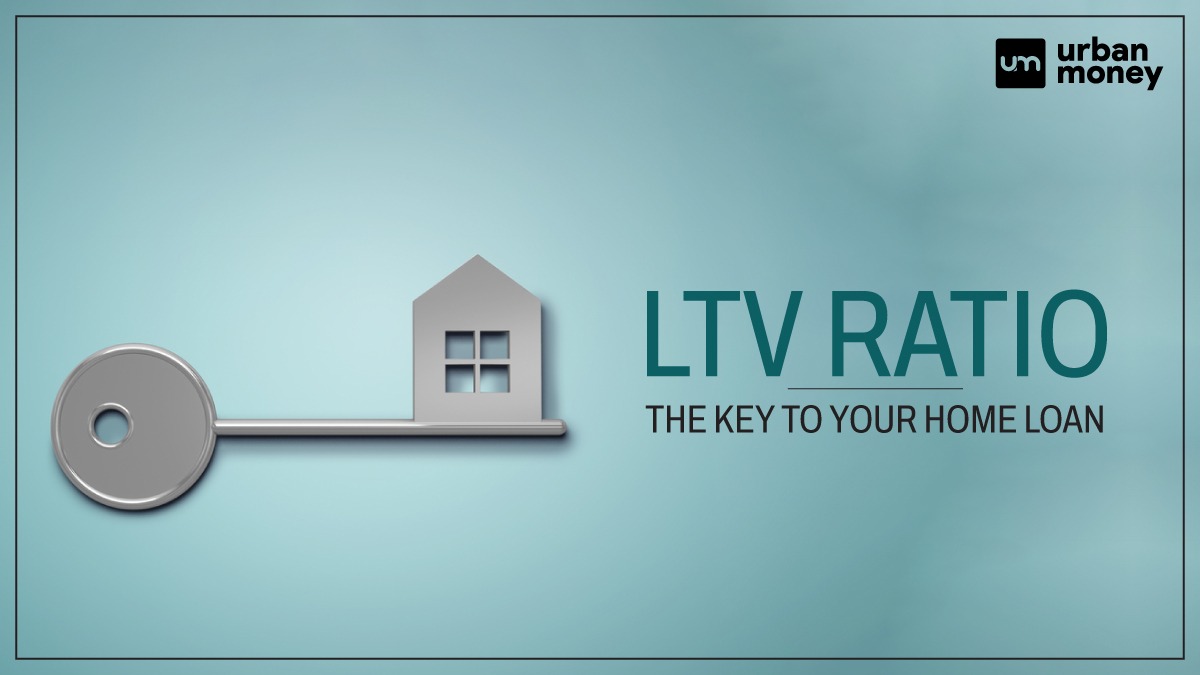Top 10 Best Private Banks in India List 2025
January 09, 2025
June 21, 2022


Hey! Are you finally buying your dream house? Are you financing it with the help of a home loan? Then familiarize yourself with the various terminologies that you might come across. One common term, you might find yourself entangled in is the Loan-to-Value ratio or LTV ratio. It is an important factor that determines how much of a lending risk you are.
In this blog, we will discuss LTV meaning, the loan-to-value ratio formula, and how it affects home loans. Without further ado, let’s get right into the LTV ratio.
Loan-to-Value Ratio or LTV ratio is a tool used by financial institutions and other lenders to assess the lending risk a buyer might be. This is done before the mortgage is approved. Mortgage refers to the use of a loan to purchase or maintain a home or land or any other real estate property.
What is a home loan and what role does the loan-to-value ratio play in it? A home loan is a secured loan availed to acquire a home in exchange for collateral. When it comes to the loan-to-value ratio or LTV meaning in terms of home loans, the definition changes. The percentage of the value of property a bank or a financial institution can lend to a buyer becomes available after LTV calculation. However, the lenders are not authorized to lend the 100% value of the property, therefore, one cannot avail of a 100% loan against the property price.
The LTV ratio holds the maximum importance when it comes to the home loan. It is defined as the percentage of loan a property buyer will be able to acquire from the lending agency. However, its importance varies from the perspective of buyers to the perspective of lenders.
The buyer is hung up on a good LTV ratio as it directly reflects their credit risk. The amount of loan they receive is determined once the bank calculates the ratio. The higher the loan they receive, the less will be the down-payment they need. However, the interest rate will be high as well. The property buyer or the borrower can receive a loan of up to 90% of the property value.
The lender calculates the LTV ratio before approving the loan to determine the credit risk. A bank or a financial institution finds it mandatory to calculate the LTV ratio to ensure that the amount they lend is not greater than the market value of the property. The lender decides the terms and amount of the loan based on the LTV ratio calculation. A higher LTV is directly linked to higher interest rates but of course at great risk. If the borrower fails to repay the amount, the bank will end up bearing higher costs.
The Reserve Bank of India, in October 2020, explained risk weights by linking it with the LTV ratio. This applies to all the home loans sanctioned up to March 31, 2023. To encourage home loans, RBI has laid down the following guidelines:
| Loan Amount | Loan-To-Value Ratio Limit |
| More than 75 Lakhs | 75% of the property value |
| Between 30 – 75 Lakhs | 80% of the property value |
| Less than 30 Lakhs | 90% of the property value |
Any bank or financial institution cannot lend more than the set limit of the LTV ratio.
From the above table, we deduct that, if the LTV ratio stands at 75% then the remaining 25% of the property value will have to be paid by the property buyer. As for the LTV limited to 80%, at least 20% of the value will have to be funded by the property buyer, a home loan may be raised against the rest of the amount. The same is for the LTV limit of 90%, here, the buyer will need to fund 10% of the property value and raise the home loan against the rest,
The loan value calculation provides the lenders with an insight on the property buyer’s credit risk. There are many reasons why a lower LTV ratio is better. A lower loan-to-value ratio:
A property buyer with a higher LTV ratio can reduce it by opting for the following ways:
The LTV ratio enables the lender to assess the borrower’s credit worthiness:. Given below is the LTV ratio calculation formula:
Loan to Value Ratio = (Principal Amount / Market Value of the property) * 100
Here,
Loan-to-value ratio can be better understood with the help of a few examples.
Example 1
A home is valued at INR 15 Lakhs. The buyer has arranged the down-payment of 5 Lakhs and has applied for a home loan for the rest of the amount. The bank before sanctioning the loan of INR 10 Lakhs will calculate the LTV ratio using the above formula.
LTV ratio = (10,00,000/15,00,000) * 100 = 67%
The LTV ratio for home loans stands at 67% which means the buyer is entitled to a loan of 67% of the property value.
Example 2
A buyer went into the bank with their property valued at 59 Lakhs asking for a loan of 40 Lakhs. The bank found out that the fair value of the property in the market is 50 Lakhs.
The bank will take the principal amount to be 55 Lakhs as per the market value of the property.
LTV ratio = (40,00,000 / 50,00,000) * 100 = 80%
The LTV ratio is calculated to be 80% which means the buyer is eligible for a home loan. However, the remaining amount of INR 19 Lakhs will have to be arranged by the buyer.
The Loan-to-Value ratio in a home loan is the most important aspect for both the borrowers and the lenders. What are you waiting for? Calculate your LTV ratio and apply for a home loan now with the bank or financial body nearest you. Unlock your home loan with the Loan-to-Value ratio.
The LTV ratio calculates the amount of home loan a bank can sanction to the property buyer. One can calculate LTV on a home loan by dividing the principal amount by the property’s market value and multiplying the result by 100. This will provide the percentage of the property value a bank or financial institution can lend.
An LTV ratio of 50% means that the bank or the financial institution will only lend 50% of the property value. The rest of the amount will have to be managed by the borrower out of their own pocket.
LTV is an acronym for the Loan-To-Value ratio. This ratio determines the percentage of the property value that a borrower will receive from the bank.
The best LTV ratio is considered to be around 80%. Even a lesser ratio is ideal.
Yes, a low LTV ratio is good. A low LTV ratio attracts the lenders and increases the chances of a buyer getting a loan easily.
Yes, the LTV ratio affects the interest rate. A lower loan-to-value ratio results in improved chances of getting a loan at a lower interest rate. This is because the credit risk is significantly less.









Top 10 Best Private Banks in India List 2025
January 09, 2025

Top10 List of Petrol Pump Companies in India
January 09, 2025

Dairy Farm Loan in 2025 : Online Procedure
January 09, 2025

Top 10 Best Bank for Home Loan In India…
January 09, 2025

Top10 Best Student Credit Cards in India 2025
January 09, 2025
© 2025 www.urbanmoney.com. All rights reserved.

Need Loan Assistance?